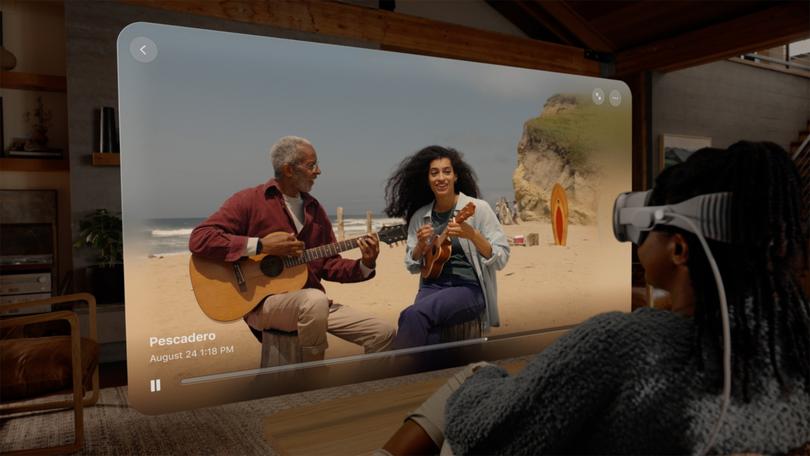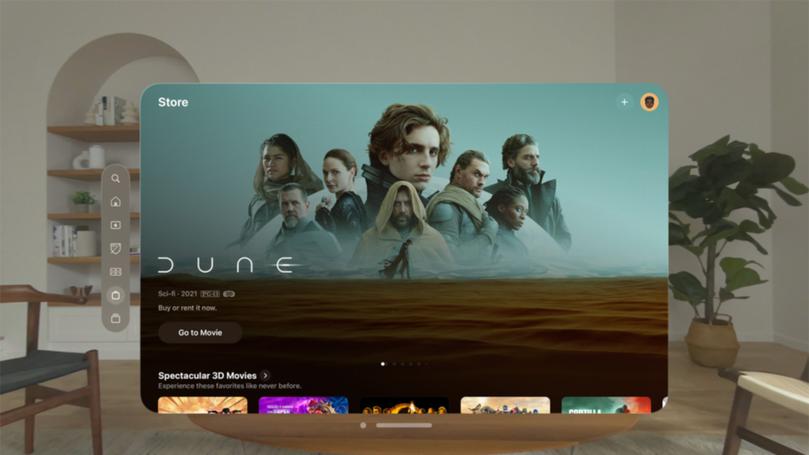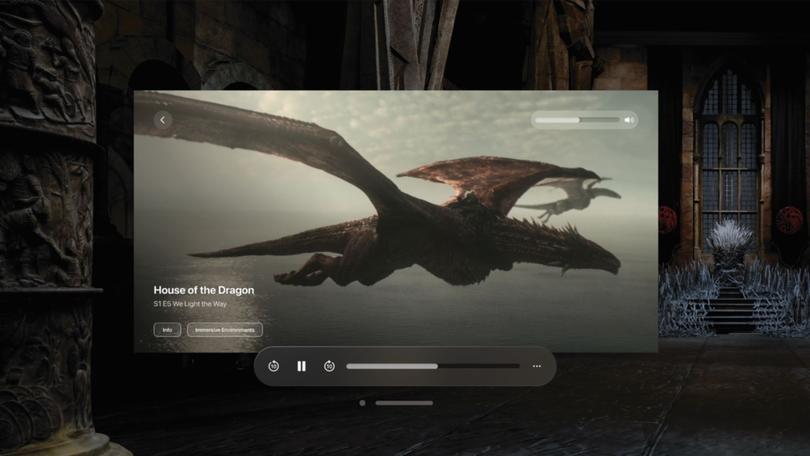Apple VisionPro could kill the double-screen scourge

Be honest. When you watch TV shows or movies at home, how close is your phone to your hand?
Are you clutching it? Scrolling through Instagram or TikTok? Shopping for things you don’t need? Replying to emails? Or going down a Wikipedia rabbit hole after initially pulling up an article on Lady Jane Grey, fact-checking a historical series?
You’re barely paying attention to what’s playing on the big screen in your living room, and only half-arsing it on your phone. Multi-tasking, by the way, is a myth.
Sign up to The Nightly's newsletters.
Get the first look at the digital newspaper, curated daily stories and breaking headlines delivered to your inbox.
By continuing you agree to our Terms and Privacy Policy.Women are not better at it, they’re just forced into it.
There are copious surveys on the advent of second screening, the practice of dividing your attention between your TV and another screen, usually your phone. The stats of how many people do it range from 66 per cent to as high as 88 per cent.
That’s as much as nine in 10 people who aren’t really watching what they’re watching. Grim.
While marketing types will proclaim what an amazing opportunity that is to bombard you with more ads on your phone while you avoid them on ad-free streaming platforms, the trend may not actually be a good thing.

It’s had a flow-on effect of how shows are being made – with distracted viewers in mind. That doesn’t necessarily mean “dumbed down” but it’s unlikely to be more complex, more involving and more cerebral.
Lila Byock, who has written for acclaimed HBO series The Leftovers and Watchmen, told The New Yorker last year, “what streamers want most right now is ‘second-screen content’, where you can be on your phone while it’s on.” Super grim.
We know that our focus is split, and a study from the University of California revealed the amount of time a person can sustain their attention on one screen has fallen to 47 seconds, down from two-and-a-half minutes in 2004.
But that could change… back.
Apple has released its VR play, the VisionPro goggles, in Australia, and while it has many Black Mirror-level features, one particular aspect piqued my interest: watching movies or TV shows with it strapped on my face.

The way it works is that a screen kind of hovers in front of you, either against your own environment (for example, your lounge or bedroom) or in front of an artificial one within the virtual realm, such as a night sky or even a cinema.
The “screen” stretches across your vision while the audio is pumped into your ears from the built-in speakers, but not directly in-ear. Rather, the sound is directionally fed into the ridges of your external ear anatomy and then travels into your inner canal. The effect sounds like spatial audio.
The picture quality was superb, comparable to a 4K TV if not better, but the demo I experienced was with Apple titles and Avatar in 3D, which are designed to look amazing on any platform or device.
Speaking of 3D, the snippet of Avatar: The Way of Water really did make you feel as if you’re right there, much more than in a cinema. There’s an intimacy to the VisionPro’s viewing experience that literally shrinks the gap between you and the screen, which is always jarred with any 3D title.
Apple’s ambitions for VisionPro include more of what it calls immersive video, which is 3D-like video that surrounds you as if you’re standing or sitting right in the middle of it. There’s a video of elephants washing themselves in front of you as if you’re actually on the banks of that lake. It’s equal parts impressive and confronting.
So, the thing with all this is that because you’re watching everything in a virtual environment, you can’t pick up your phone. You can’t second screen.

You could make the size of the viewing screen smaller and open multiple screens at the same time so that if you wanted, you could run Instagram and a web browser within the VisionPro, but why would you want to when the experience is properly immersive?
The VisionPro already supports streaming apps Apple TV+, 7plus, Disney+, 9Now and 10 Play, and one imagines more will be added in the future. And while the steep price tag of $5999 puts it out of reach of most consumers, remember that the first flat-screen plasma TVs were $10,000.
The first iterations of new technology always cost an eye-watering amount. The later versions are more accessible.
If VR goggles become a mass-market product in the way that smartphones and tablets (which Apple had a big hand in) and flat-screen TVs eventually did, then it has the potential to change viewing habits back to single-screen focus.
Like sitting in an IMAX theatre, the screen (even regular titles and not 3D or “immersive video” titles) in the VisionPro takes up your whole field of vision. It plunges you into what you’re watching, as it was intended, as we used to do.

